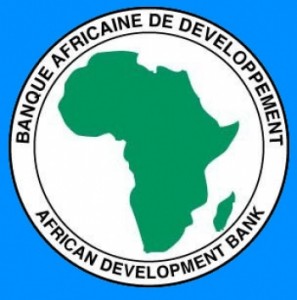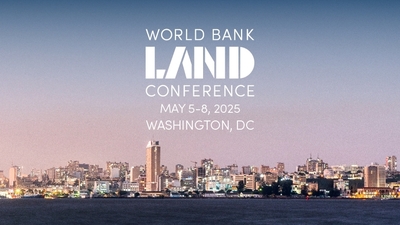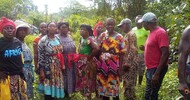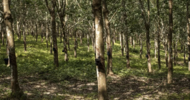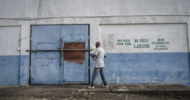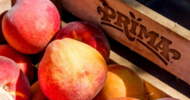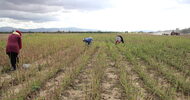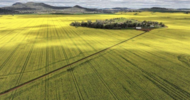African Development Bank Group | 24 October 2010
Press Briefing
5th African Economic Conference
Ramada Plaza Hotel, Gammarth, Tunisia - 27th -29th October 2010
Food Security - Unlocking Africa’s vast agricultural potential:
Private sector funds and land and property law reform keys to success Africa is home to more than 60% of the world’s uncultivated arable land, but it remains unexploitedbecause the massive investment needed is beyond the public sector’s capacity, according to the
African Development Bank (AfDB). However, simply turning to the private sector for funds is not a clear-cut option, due largely toproperty rights issues in Africa. Private investors want large commercial land holdings for
investments and access to global markets. But such holdings are hard to obtain in the framework ofexisting land tenure arrangements.
So boosting Africa’s agricultural capacity not only requires capital, but also a conducive investment
environment; improved technological innovation, property rights and land tenure reforms, as well assustained investment in rural infrastructure to give farms easier access to markets.
The issue for Africa is critical because agricultural productivity and growth in Africa have been
observed to be twice as effective in reducing poverty than growth in any other sector. In this context,the AfDB - working together with African countries and other partners - seeks to boost food
production on the continent. This process will help reduce poverty and ensure food security. For Africa, where agriculture continues to be the mainstay for a majority of the population, thechallenge of recent high food prices also has an upside. That is, the opportunity to raise agricultural
production on the continent. It is clear that while the food price rises in 2010 cannot be compared to previous ones, food prices arestill rising. The 2007-2008 crisis saw food prices rise across the board for all cereals and non-cereals
over several months, but food price increases over the past months have been confined to only a fewcrops, notably wheat.
So far, this year has not witnessed any significant shifts in demand and supply and average food prices
have been largely stable. The world wheat harvest in 2010 is the third largest of all time, according tothe Economist. This year’s harvest is only about 9% short of the 2009 bumper harvest, which by and
large replenished stocks. The current situation primarily relates to panic buying rather than structural shortages. Adverseweather conditions cut Russia’s harvest by over 30%, and the country reacted with a wheat export ban
in August 2010. This ban sparked panic buying by several countries. Egypt, the world’s largest wheat importer, boughtwheat on the spot market due to the Russian ban. Similar trends were seen in Tunisia and Algeria. It
is likely that these and other countries could resort to the wheat futures market for wheat supplies. As for Africa, food output growth at 2% per annum is below the population growth rate of 2.4%.Boosting agricultural productivity should be a primary focus of any responses to achieving higher food
growth. This requires a shift from a reliance on rain-fed cropping. Action is also needed over a lop-sided global trade environment that has militated against value-adding investment that could reduce
food wastage in Africa. Also, there are emerging risks from climate change; the growing bio-fuels market; declining soilquality, and the “land grab”. The poor are most vulnerable to these developments and market volatility,
calling for targeted programs to improve access to food and social protection. Notwithstanding the downside risks, opportunities still remain. With high population growth,resurgence of strong economic growth and the increase in the middle income class, Africa’s time for
scaling up agricultural and agro-industry investments is ripe. Agriculture’s current 20% contribution to GDP demonstrates the potential of the sector to generateeconomic dynamism that will complement the manufacturing sector. Such dynamism could also
emerge from the fact that agricultural investment opportunities go far beyond food production, toinclude investments related to backward and forward linkages, such as input and output markets and
processing, and infrastructure. Indeed, almost 11% of Africa’s rural labor force derives its livelihood from similar activities in thenon-farm sector.
Moreover, demand for packaged food is fastest in the developing countries. It is increasing by 7% in
upper middle countries, 28% in lower middle countries, and 13% in low income countries. Thiscompares with annual rates of only 2 to 3% per year in high income countries. Africa could, therefore,
benefit from expanding into higher value-adding agro-industry related activities. The AfDB’s efforts in promoting agriculture and food security are being aided by the return of otherpartners, which saw the G-8 countries and China pledging USD 20 billion and USD 10 billion,
respectively, in support of the sector. Concerted efforts in support of the development of rural infrastructure, research and the adoption ofnew seed varieties (e.g. NERICA rice) are also creating new opportunities for smallholder farmers.
In addition, through its continuous dialogue with Regional Member Countries (RMCs), the business
environment in Africa is improving and this could help draw private investors to agriculture. Inparticular, the Bank allocated Units of Account 1.4 billion (almost USD 2.21 billion) in response to the
2007-2008 food crisis, mainly targeting long-term sustainability of the sector. Within the context of its Agriculture Sector Strategy (2010 – 2014) the AfDB plans to invest USD 1billion annually until 2014. These resources are largely targeted at improving rural infrastructure and
supporting agro-industries, with a view to increasing productivity and income growth – both are critical elements for food security in Africa.

